Mexico will maintain legal pressure on US gunmakers and dealers, Sheinbaum says: Friday’s mañanera recapped
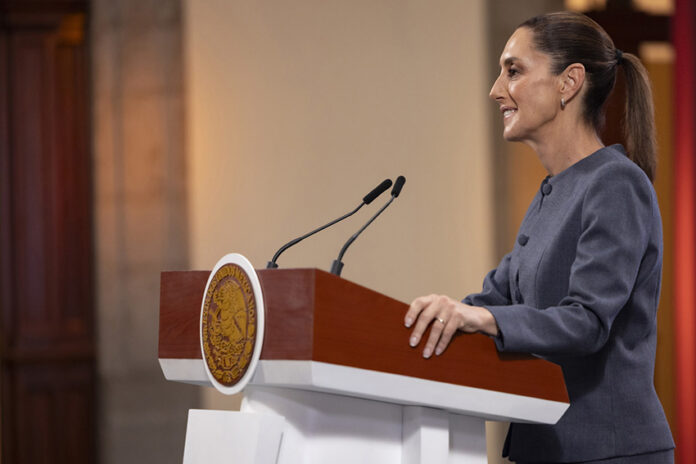
At her Friday morning press conference, President Claudia Sheinbaum responded to the United States Supreme Court’s ruling on Thursday against a Mexican government lawsuit, and fielded questions about Mexico’s anti-fentanyl-trafficking efforts and her relationship with U.S. President Donald Trump.
Here is a recap of the president’s June 6 mañanera.
Sheinbaum expresses disagreement with US Supreme Court decision on suit against gunmakers
A reporter asked the president about the United States Supreme Court’s decision to throw out Mexico’s US $10 billion lawsuit against gunmakers after all nine justices ruled that a 2005 law, the Protection of Lawful Commerce in Arms Act (PLCAA), shields the defendants from prosecution.
“The argument of the Supreme Court of the United States is that they find no link between the manufacture of weapons and the passage of weapons from the United States to Mexico,” Sheinbaum said.
“Remember that in January of this year the United States Department of Justice released a document in which it recognizes that 75% of weapons seized in Mexico come illegally from the United States,” she said.
“But the [Supreme] Court says there is no link between who makes [the firearms] and the weapons that come into Mexico, something that we don’t agree with,” Sheinbaum said.
US Supreme Court throws out Mexican lawsuit against gunmakers
Justice Elena Kagan said in the Supreme Court’s written opinion that “because Mexico’s complaint does not plausibly allege that the defendant gun manufacturers aided and abetted gun dealers’ unlawful sales of firearms to Mexican traffickers, PLCAA bars the lawsuit.”
Sheinbaum noted that the Mexican government has a separate lawsuit against gun stores in Arizona. That suit was filed in 2022, but still hasn’t been resolved. In the lawsuit, the Mexican government accused five gun stores in Tucson, Phoenix and Yuma of involvement in illegal arms trafficking to Mexico, where the majority of firearms used in high-impact crimes such as murder come from the United States.
Sheinbaum said that her government would continue to collaborate with the lawyers working on that case.
She also said that her administration would “continue working with the government of the United States” on stopping the southward flow of firearms.
“For the first time,” the United States government has “recognized the importance” of authorities in the U.S. taking action to “reduce the passage of arms from the U.S. to Mexico,” Sheinbaum said.
She noted that new U.S. Ambassador Ron Johnson took to social media on Thursday to post about U.S. efforts to combat arms trafficking to Mexico.
Under the leadership of @POTUS @realDonaldTrump, we work with President @ClaudiaShein and her team to stop southbound arms trafficking and dismantle networks fueling cartel violence. Together, we make our countries stronger and safer.
— Embajador Ronald Johnson (@USAmbMex) June 5, 2025
Johnson wrote on X that “Under the leadership of @POTUS @realDonaldTrump, we work with President @ClaudiaShein and her team to stop southbound arms trafficking and dismantle networks fueling cartel violence.”
“Together, we make our countries stronger and safer,” he added.
Sheinbaum said that in talks with the United States government, “we’re going to continue insisting … that it’s not just about not allowing the passage of drugs from Mexico to the United States, but also about not allowing the passage of weapons from the United States to Mexico.”
‘Are you doing enough to avoid a U.S. military intervention?’
A reporter from Australia’s public broadcaster ABC asked the president whether the Mexican government, with its efforts to stem the flow of fentanyl to the United States, is doing enough “to avoid a U.S. military intervention.”
After stating that “President Trump is unpredictable and … has a history of controversial comments against women,” the reporter also asked Sheinbaum how she handles her relationship with the U.S. president.
In response to the first question, Sheinbaum said that the quantity of fentanyl seized by U.S. authorities at the Mexico-United States border has declined around 40% since Trump began his second term.

Seizures of fentanyl at the border can be used as a rough proxy to estimate the amount of fentanyl being smuggled into the United States across the Mexico-U.S. border. A decline in confiscations of fentanyl at the border therefore indicates a decrease in the quantity of the drug entering the U.S.
Sheinbaum attributed the “very significant” decline in fentanyl seizures at the border to her government making fentanyl busts on “this side of the border” — including the largest bust in Mexican history last December.
“Do we do it to satisfy President Trump? No,” she said.
“We do it because we don’t want fentanyl to reach any young person in the United States, nor do we want fentanyl to reach young people in Mexico or anywhere in the world,” Sheinbaum said.
She also said that “we reject the presence of United States troops” in Mexico “because Mexico is a sovereign, independent country.”
Sheinbaum said last month that she had rejected an offer from Trump to send the U.S. Army into Mexico to combat drug cartels.
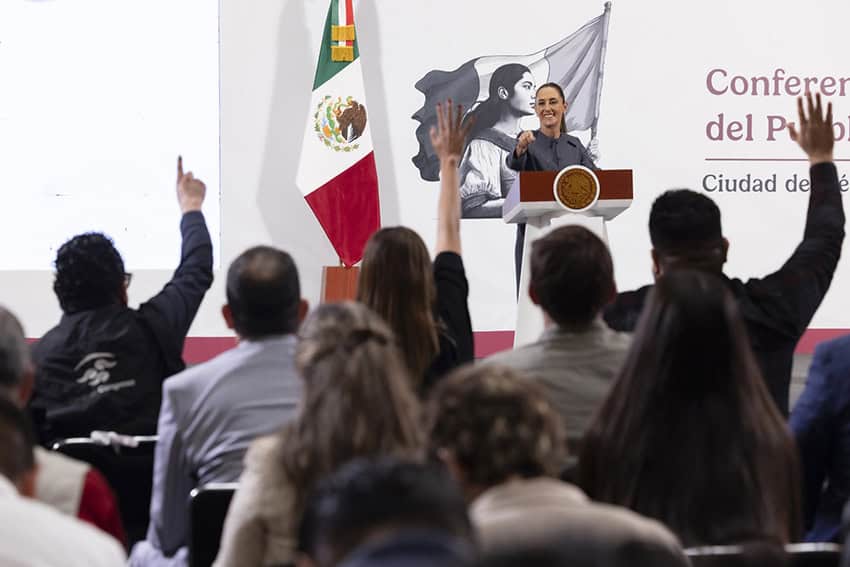
In response to the reporter’s second question, Sheinbaum said that she handles her relationship with Trump “with respect.”
“I’ve always said Mexico must be respected. And when we speak by telephone, … [we speak] in an amiable way, always amiable, but with clear principles and seeking agreements,” she said.
“There has been recognition from the United States government of the work Mexico does in various areas,” Sheinbaum added.
“What do we want? An agreement that allows the trade pact [the USMCA] to be respected,” she said, explaining that Mexico is particularly pushing for an exemption from the 50% U.S. tariff on steel and aluminum that took effect this week.
By Mexico News Daily chief staff writer Peter Davies ([email protected])
Despite tariffs, Mexico maintains significant trade surplus with the US
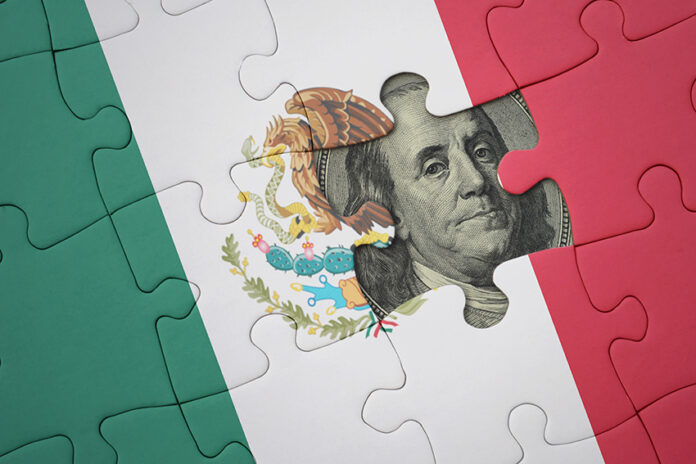
Mexican exports to the U.S. declined in April for the first time in 13 months, while Mexico’s trade surplus with its northern neighbor increased since last year, according to the U.S. Census Bureau and the U.S. Bureau of Economic Analysis.
Data from the U.S. International Trade in Goods and Services report for April showed that Mexico had a US $13.5 billion trade surplus that month, up 2.8% from April 2024. However, the surplus this April decreased compared to March, when Mexico registered a US $16.8 billion trade surplus with the U.S.
Mexico exported nearly US $41.7 billion in goods and services to the U.S. in April, 2.7% less than April 2024. The decline is due to the aggressive tariffs that U.S. President Trump placed on Mexican goods outside the U.S.-Mexico-Canada trade agreement (USMCA), according to the website Trading Economics.
At the same time, U.S. exports to Mexico fell year-on-year by 5.2%, down from US $29.4 billion in April 2024 to US $27.8 billion this year.
Even so, Mexico was the top exporter to the U.S. in April and also the top recipient of U.S. goods and services.
The trade report was released as Mexico’s Economy Minister Marcelo Ebrard is negotiating with U.S. officials after Trump doubled tariffs on imports of steel and aluminum to 50%. Ebrard criticized the measure which went into effect on Wednesday, calling it “unsustainable.”
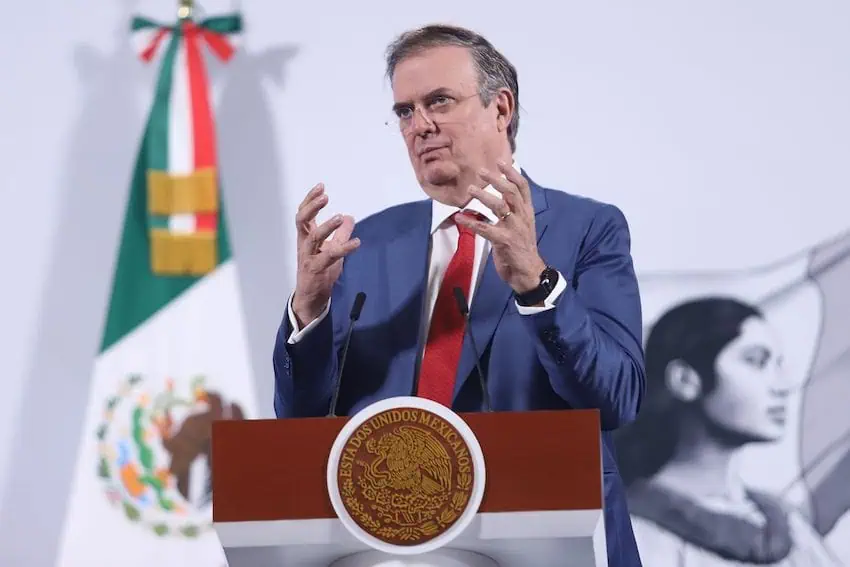
Before heading to Washington, Ebrard expressed doubt that the tariffs could be sustained over time, saying they would harm industries in both countries, since steel is used primarily for the automotive industry, construction and electronics.
Ebrard called the tariffs unfair, pointing out that the U.S. enjoys a surplus in steel trade with Mexico.
“It doesn’t make sense to put a tariff on a product you have a surplus in,” he said. “Normally, it’s imposed when you have a deficit, not a surplus.”
Even with the decline registered in April, Mexico remains the U.S.’ No. 1 trade partner, with total trade exceeding US $69 billion, representing 15% of U.S. international trade. Canada (US $56.6 billion, or 12.2%) and China (US $33.6 billion, or 7.2%) were second and third, respectively.
Overall, Mexico accounted for 14.7% of all goods and services imported by the U.S. in the first four months of the year, slightly ahead of Canada (13.1%) and nearly doubling China (8.7%). China is the U.S. trading partner most affected by the U.S. tariffs.
Exports to the U.S. from China and from Canada fell more steeply, dropping 19.7% for China and 14.4% for Canada. Canada is the U.S.’ No. 2 trade partner and China is third.
The U.S. trade report also included first-quarter statistics on trade in goods and services by country.Its figures indicate Mexico enjoyed a US $49.2 billion surplus through the first three months of 2025.
With reports from El Economista, La Jornada, Trading Economics and El Financiero
This US sportfishing boat keeps sneaking into Mexico’s natural protected areas. Mexico is still working on how to respond

Mexico’s ability to defend its marine sanctuaries is being put to the test in Revillagigedo National Park, the largest marine protected area in North America.
According to a report from Mexico’s National Commission of Natural Protected Areas (Conanp), a U.S.-flagged sportfishing vessel has entered the massive, 14.8-million hectare, no-take biodiversity zone multiple times since 2017.

The most recent expeditions occurred in January and March, according to satellite data collected by Conanp.
The area is in the eastern Pacific Ocean, about 390 kilometers southwest of the southern tip of the Baja California Peninsula and approximately 720 to 970 kilometers west of the Mexican mainland.
Conanp said that the fishing boat Red Rooster III — operated by San Diego-based Lee Palm Sportfishers, according to the newspaper El País — entered the park near Clarión Island, one of four islands in the area.
The vessel traveled at 4 to 7 knots, a speed consistent with fishing, and displayed zigzagging movements generally associated with tuna and wahoo (ono) fishing.
“This activity is completely prohibited in Revillagigedo, and it wouldn’t be the only irregularity this vessel has committed,” Fabio Favoretto, a Scripps Institution of Oceanography analyst involved in monitoring, told El País.
Social media posts from the vessel’s January trip showed crew posing with freshly caught tuna, further supporting the allegations.
Historically, the area in question was known as the Revillagigedo Archipelago Biosphere Reserve after Mexico designated it a biosphere reserve in 1994. In 2016, it was declared a UNESCO World Heritage natural site, and a year later, Mexico expanded its protections and declared it a national park — which stood as the last such designation until two years ago.
The area’s four volcanic islands are uninhabited except for two small naval bases and are accessible only by sea, typically from Cabo San Lucas, Baja California Sur, or Manzanillo, Colima.
Often described as the crown jewel of Mexico’s marine conservation efforts, Revillagigedo offers sanctuary to the continent’s greatest concentration of tropical marine megafauna and is sometimes called “the Galápagos of Mexico.”
The area offers critical refuge, spawning grounds and migratory routes to a remarkable variety of marine species, including humpback whales, manta rays, dolphins, hammerheads and other types of sharks, yellowfin tuna, and other game and table fish.

Studies cited by conservationists indicate that such protected areas can boost adjacent fisheries by 12% to 18% through population spillover. Yet the park’s remote location and vast size make enforcement challenging.
Mexican tour operators are regulated by sustainable wildlife-watching practices when they visit the area, which has increasingly become a mecca for scuba divers.
In 2023, a trip there was chosen by National Geographic’s as one of its top five “adrenaline-pumping adventures.”
Conanp collected its data using the open-access Global Fishing Watch and the A.I.-enhanced Skylight, two advanced digital platforms that monitor and analyze vessel activity at sea, particularly to combat illegal, unreported and unregulated fishing.
Conanp said it documented at least eight unauthorized entries by the Red Rooster III since 2017.
Despite submitting evidence to Mexico’s Federal Attorney General for Environmental Protection (Profepa) and the Navy (SEMAR), no sanctions have been imposed, El País reported.
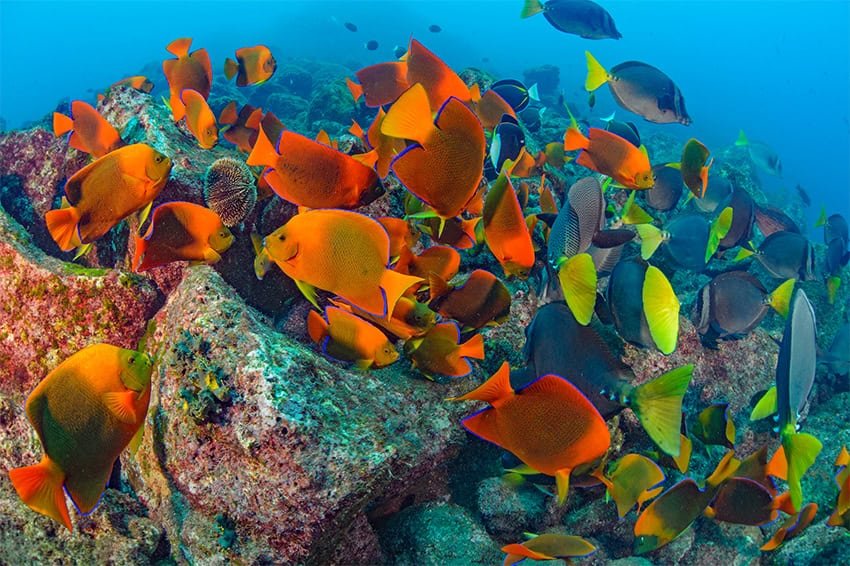
Profepa has declined to comment, while SEMAR stated it “does not have any other type of information” beyond satellite alerts. Meanwhile, Conanp officials lament systemic gaps.
“We must act in accordance with international law, but what’s the point of protecting an area by decree if the law isn’t respected?” Benito Bermúdez, Conanp’s regional director, asked in El País.
A 2018 case involving a tourist vessel near Clarión Island ended without penalties despite evidence, highlighting recurring accountability issues.
“There’s no point in having technologies if the legal framework isn’t there,” Favoretto complained.
Experts, meanwhile, urge stronger interagency coordination, swifter legal action and transparency through platforms like Global Fishing Watch, which allow public tracking of vessel movements.
Moreover, Mexico’s government has pledged to update regulations and leverage international partnerships to address jurisdictional complexities involving foreign vessels, according to the El País report.
With reports from El País, Latin American Post and Telemax
Sheinbaum cancels Guerrero trip after protesters sack headquarters of rival teachers union
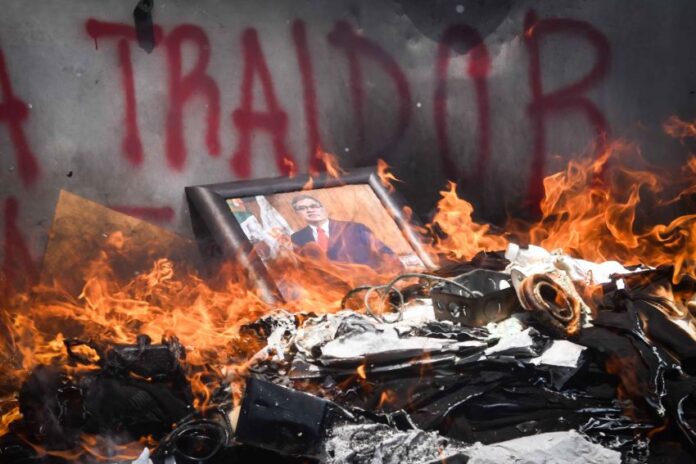
Members of a dissident teachers’ union who have been protesting in Mexico City for more than three weeks escalated their tactics Thursday, vandalizing public buildings, blockading two government pension offices and setting fires at a rival union’s headquarters.
The National Coordinator of Education Workers (CNTE) has been on strike since May 15, demanding a wage increase, pension reform and reinstatement of dismissed teachers.
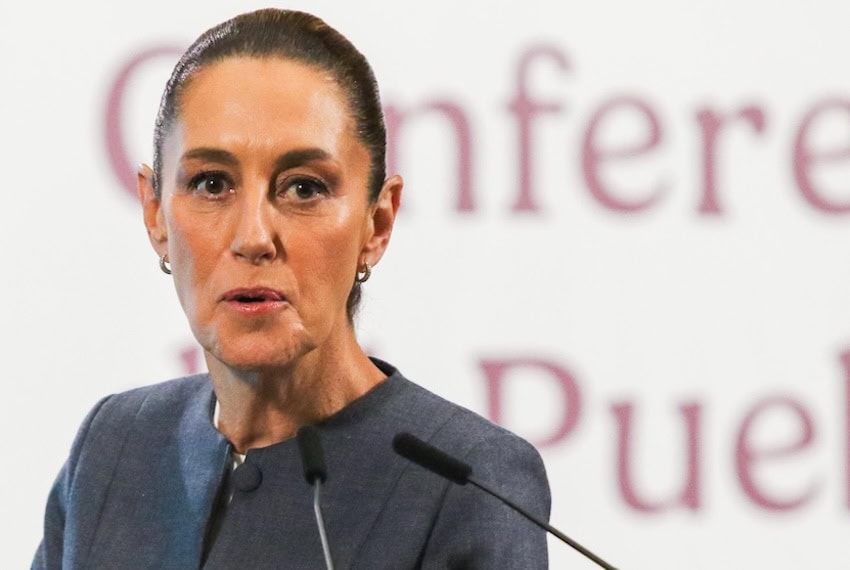
After pitching tents and occupying several blocks of downtown Mexico City, union members have regularly staged disruptive demonstrations, including toll booth takeovers, roadblocks on major thoroughfares and a lengthy blockade of the Mexico City International Airport.
On Thursday, members of the CNTE from the state of Guerrero took action, as protesters sacked the Mexico City headquarters of a rival teachers’ union — the SNTE — breaking into the building and sacking several offices.
The masked rioters carried out files and furniture and set them ablaze in front of the building, before setting another fire inside the offices. The fire department arrived quickly on the scene to extinguish the flames.
Across town at the government pension headquarters, protesters took hammers and crowbars to the steel barricades surrounding the building. They were unable to get through, but blocked access for several hours. A siege was also undertaken at a separate pension office, lasting four hours.
These protests came a day after CNTE protesters — reportedly led by the radical Guerrero faction known by the acronym CETEG — vandalized the headquarters of the Interior Ministry, destroying several doors and windows of the iconic Cobián Palace. At least seven homemade fire bombs were tossed onto the grounds, according to the newspaper El Universal.
In separate statements, the Interior Ministry (SEGOB) and the Education Ministry condemned the vandalism, urging the CNTE to return to the negotiating table. SEGOB cautioned that violence and destruction are never a solution and decrease the chances of a timely resolution.
The attack on the SEGOB building occurred after Wednesday’s negotiation session ended with no agreement. CNTE leadership accused the government of intransigence, insisting on pension reform and the abrogation of the 2007 Education Reform that stripped the CNTE of powers and returned them to the federal government.
Several hours later, members of CNTE Section 22, a faction from the state of Oaxaca, announced it was leaving the Zócalo tent city. The move was described as a tactical retreat, but Thursday’s disturbances indicated the protest was not losing steam.
President Claudia Sheinbaum on Friday criticized the violent turn the protests have taken.
“We disapprove of these actions and never condone violence,” she said. “Protests should be peaceful and those who committed these acts of vandalism should be charged.”
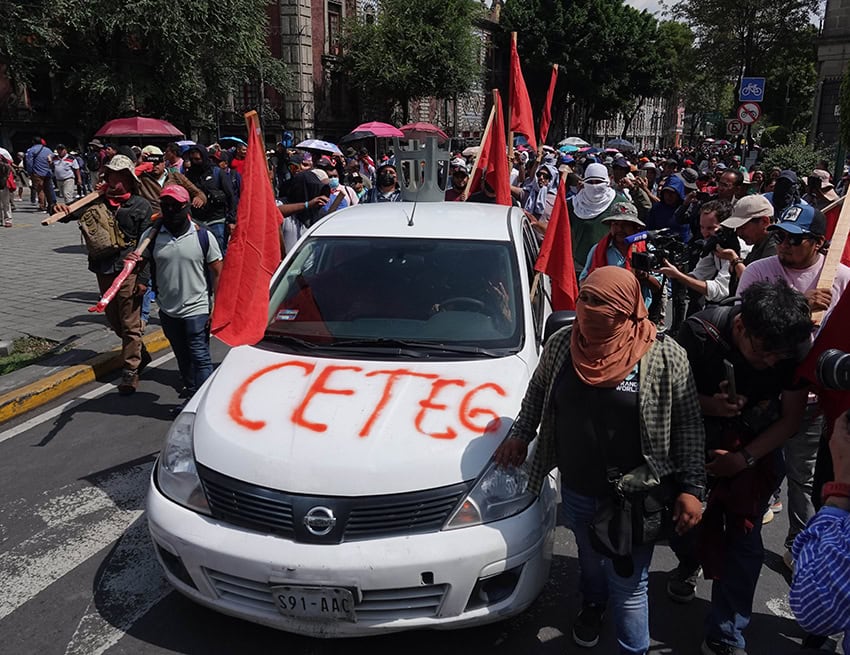
Sheinbaum called the violence “a provocation” and said the SNTE has a right to take legal action.
Sheinbaum had been scheduled to make an official tour of Guerrero on Friday, but after Thursday’s violence in Mexico City and in Guerrero, and amid reports that CETEG was preparing demonstrations in its home state during the president’s visit, her agenda was altered.
SNTE leader Alfonso Cepeda condemned the attack on his offices and said his union would be filing an official complaint.
After Cepeda criticized CNTE actions, saying “teachers don’t act with violence,” Section 22 issued a public statement calling the SNTE “a political arm of the state.”
The SNTE accepted the 10% pay rise offered by Sheinbaum on May 15, National Teachers Day, but the CNTE rejected the offer, declaring a strike in four states. The next day, thousands of CNTE members began their occupation of downtown Mexico City.
With reports from La Jornada, El Sur de Acapulco, El Universal and Animal Político
Mexico City teen who developed AI medical app wins Harvard Book Award
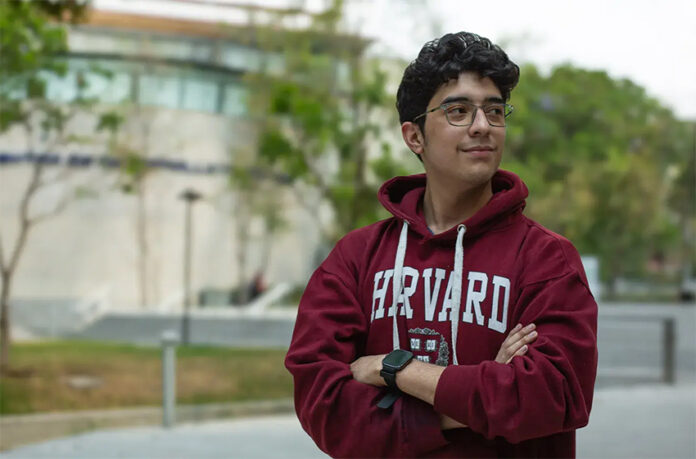
Leonardo Gámez, a student at PrepaTec Mexico City, was recognized nationally with the 2025 Harvard Book Award.
The recognition is given out by the alumni of Harvard University to high-achieving students in 11th and 12th grade reading classes, from a pool of 2,000 high schools from around the world.
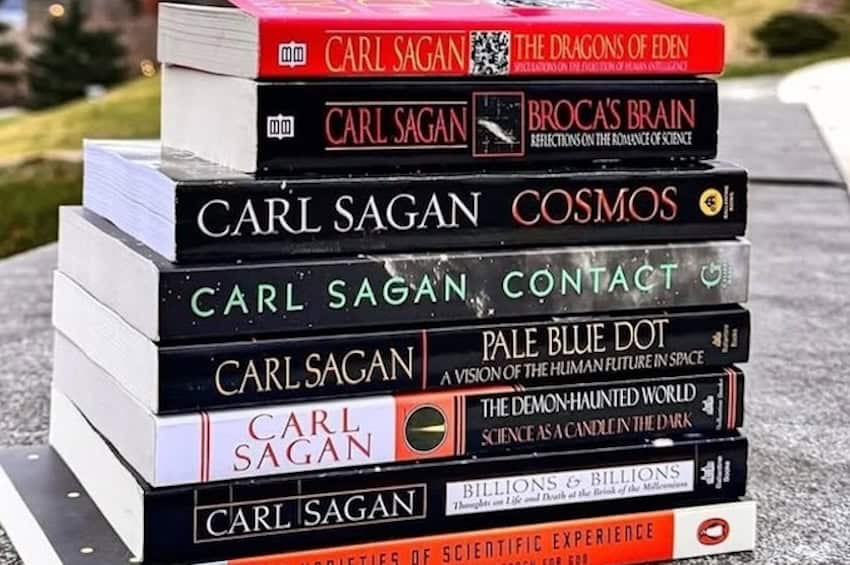
“I lack the words to express how grateful I feel and how surreal it feels to win an award like this,” Gámez said.
At just 17, Gámez has said he’s always been passionate about science, with a permanent question roaming his mind: “Why does the world work this way?”
“Carl Sagan loved to work, and when a child asked him, ‘Why are leaves green?’ he said the most important thing was not to say ‘because they are,’ but rather ‘I don’t know, let’s find out,’” Gámez said.
During the selection process for the award, he shared his life story, showing how science has been his constant motivation to create projects that not only advance technology, but also help improve the society around him.
As someone who is constantly developing science projects, he created ResQ AI, an application that uses Artificial Intelligence to optimize response times to medical emergencies and provide efficient solutions.
This project took him to the Space Exploration Educators Conference in Space Center Houston, United States, last year. There, before a panel of NASA educators, he presented the potential of AI in space.
He also developed Love Warning, an app designed to help his friends detect when their relationships were becoming toxic. This app was selected to participate nationally in the National Autonomous University of Mexico’s PAUTA science fair.
Gámez, who is nearing the end of his fourth semester at PrepaTec, has expressed his dream to become an astronaut. With this goal in mind, he will conduct research in quantum physics at the Slovak Academy of Sciences in Bratislava, Slovakia. He also plans to take the SAT exam to pursue a degree in physics in the U.S.
Mexico News Daily
Mexico-China flight connectivity set to grow with new alliance between Volaris and Hainan Airlines
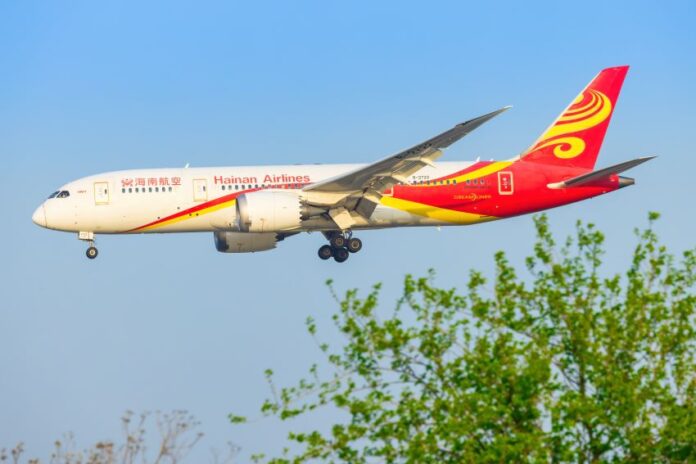
Mexican budget airline Volaris is teaming up with China’s Hainan Airlines to significantly expand air connectivity between the two counties.
The two airlines announced a strategic alliance on Tuesday which will use the international airports in Tijuana and Mexico City as hubs.

The agreement partners a full-service carrier, Hainan, with an ultra low-cost carrier (ULCC). Such partnerships are not common practice in the industry and typically rely on code-sharing, allowing the ULCC to use the full-service carrier’s brand and network to reach new markets.
Hainan offers more than 1,700 routes with destinations in Asia, Europe, North America, Oceania and Africa. Last year, the Chinese carrier began operating twice-weekly flights to Mexico, one to Mexico City and the other to Tijuana.
The Volaris-Hainan alliance will feature a codeshare agreement, making all flights available through Hainan’s sales channels.
Though still awaiting regulatory approval, the partnership is set to commence in the second half of 2025. It remains to be seen if loyalty integration and premium services will cross over.
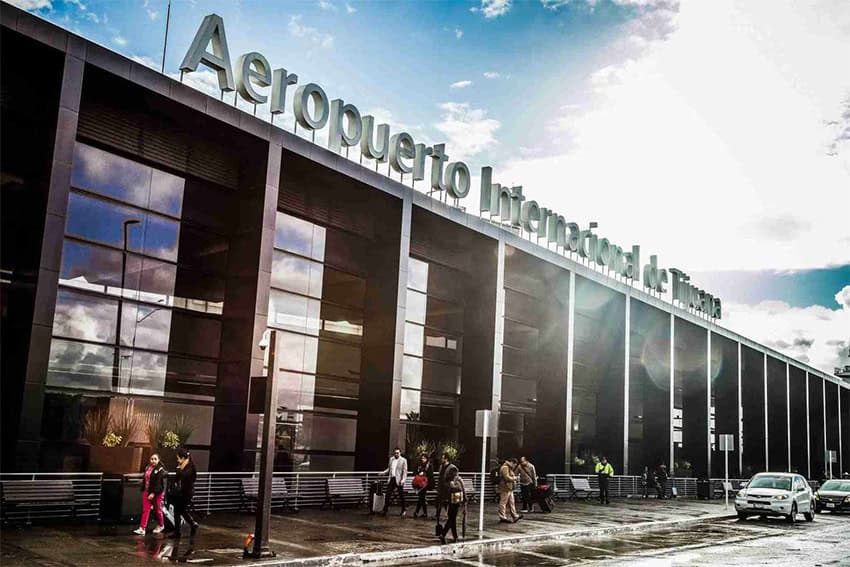
Once implemented, the plan will allow Hainan customers to access Volaris’ domestic network — comprising more than 50 destinations — without being required to make multiple reservations, streamlining the travel experience.
This integrated booking system is designed to streamline the travel experience from Asia to Mexico’s interior, allowing for a single reservation covering both segments.
In a press release, Volaris CEO Enrique Beltranen described the agreement as significant, saying the partnership strengthens Volaris’ commitment to providing accessible connectivity.
“We are proud to announce this alliance with Hainan Airlines, a highly prestigious international airline,” he said. “Its strong presence in China opens a wide range of opportunities for tourism and business between Asia and Mexico.”
The alliance represents a significant milestone for Volaris, establishing its first partnership with a Chinese carrier.
Travel Update magazine said the agreement could potentially lead to a reciprocal arrangement, which would offer Mexican travelers enhanced access to international destinations via Hainan’s expansive network.
Volaris’ existing codeshare agreements with Frontier Airlines and Iberia Líneas Aéreas appears to be part of a strategy to broaden the Mexican airlines’ international reach, potentially paving the way for further collaborations.
The agreement boosts Mexico’s international connectivity and, according to Aviación al Día magazine, reinforces Volaris’ position as Mexico’s leading airline in passenger numbers.
Volaris rival Aeroméxico has partnerships with China Southern and China Eastern.
With reports from El Economista, Expansión, Aviación al Día and Travel Update
Toast your upcoming June with these vintage Mexican wine festivals
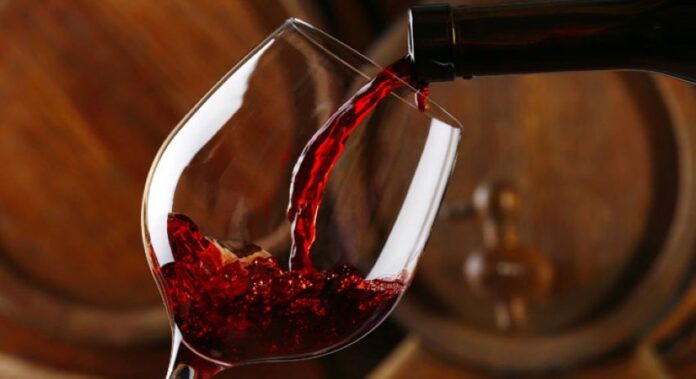
The month of June means three different Mexican wine festivals celebrating local varietals: Zona Vino in Mexico City; the Fiesta Internacional del Vino in San Luis Potosi; and Fevino in Guadalajara.
Zona Vino
View this post on Instagram
Zona Vino has become a Mexico City tradition and its 10th edition promises to be one of its best. The event will take place at the headquarters of newspaper Reforma, a beautiful neoclassical building in Santa Cruz Atoyac, Benito Juárez.
On June 7 and 8, starting at 11 a.m., the very best of Mexican and imported wine and gourmet cuisine will be presented in tastings and pairings. International labels such as Vinos Wagner, La Madrileña and La Castellana will be present alongside Mexican wineries like L.A. Cetto and Chateau Camou, among others. These wineries will offer the very best of their vast catalogs and provide an incredible opportunity for event goers to get to know new wineries.
Tickets can be purchased online or on the day of the event on the premises. Event-goers with subscriptions to Reforma can take advantage of special discounts.
Feria Internacional del Vino
On June 6 and 7, San Luis Potosí will host the 13th Feria Internacional del Vino (International Wine Fair). With over 500 different wineries, this event is one of the region’s most important. The event will be hosted in the Centro de la Artes, built as a jail in the 1800s, which held famous inmates including revolutionary and future president Francisco I. Madero.
The event is organized into 13 pavilions that each offer different experiences for attendees. In the Salon de Toneles guests will be led in wine tastings by a team of experts while next door at the Gastronomy pavilion delicious food will be available to accompany your wine. Take them both to go and you can have a picnic in one of the event’s outdoor green spaces.
If you love mezcal there will also be opportunities to try various local brands — San Luis Potosi is famous for its mezcal — as well as mezcal brands from across the country. Beer lovers haven’t been forgotten either. The fair will host booths dedicated to craft beer in addition to well-known international brands like Heineken, one of the event’s sponsors.
All of this will be accompanied by live music as well as a space dedicated to circus arts. This festival is two days full of alcohol, food and art.
The beautiful venue features sculptures scattered throughout, a reflecting pool, an old guard tower and a museum dedicated to surrealist painter and sculptor Leonora Carrington.
This year’s guest country is Argentina, so be sure to try some Argentine wines while you’re there. Among the industry stars in attendance is Alejandro Vigil, who’s become one of Argentina’s most lauded winemakers in the past several years. His time at the Catena vineyard definitely left its mark on the brand, as they are currently considered some of the best wines in the world. Vigil’s new project, El Enemigo, is making waves with its Cabernet Franc and is an absolute must to try at the festival.
Fevino: El Festival del Vino Mexicano
View this post on Instagram
Also on June 7 the annual Fevino festival will be back in Guadalajara, this time taking place in the Jardín Parque Ávila Camacho. More than 60 wineries will be in attendance including many from Jalisco; though a newcomer in the Mexican wine industry, the state is producing extremely high-quality bottles.
The Altos Nortes Vinícola, Cerca Blanca, Cava Post Data and La Estramancia wineries are all putting Jalisco on the map and the state even has its own wine route now that includes local cuisine, ceramics and stops for the spirit the state is most famous for: tequila.
As the national wine industry continues to grow and expand, these three festivals will show you just how good a Mexican glass can be.
Diana Serratos studied at Universidad Nacional Autónoma de México (UNAM) and UNCUYO in Mendoza, Argentina, where she lived for over 15 years. She specializes in wines and beverages, teaching aspiring sommeliers at several universities. She conducts courses, tastings and specialized training.
The 10 coolest museums in Puebla (and where to find them)
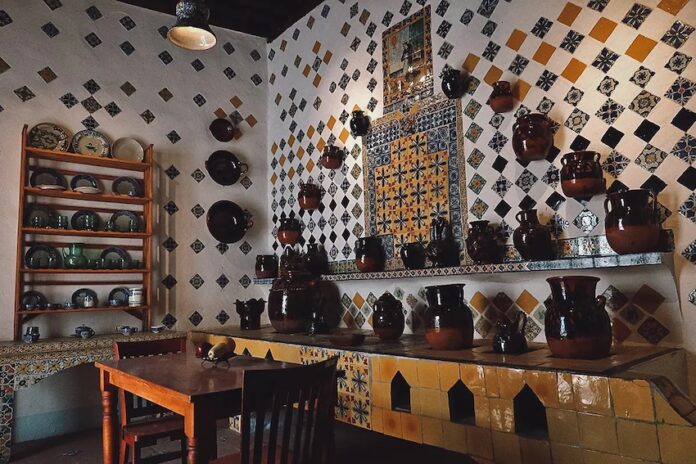
Puebla has always charmed me. The first time I visited, I was immediately impressed by the city’s bold mix of architecture, brightly-tiled facades and churches that, upon entry, swallowed me whole. I strolled down Calle de los Sapos at night, string lights twinkling above me, Skittle-colored buildings to my right and left and, like any good Mexican city, teenagers making out on the public benches along the sidewalks all around. I loved it.
In the years I’ve been living in Mexico City, I often steal away to Puebla. I enjoy the unpredictability of this city of 3.4 million people, but there’s also a certain security here that doesn’t exist in the capital. A Poblano, for example, will generally bring their car to a stop as I cross the street instead of nearly running me over while hurling insults in my direction.
Puebla is a happy place, and despite its obvious European influence, there’s something about it that feels undeniably Mexican. Walk down any street and you’re likely to pass an alleyway where older ladies whip up molotes, a sort of fried masa calzone stuffed with potatoes, cheese or shredded chicken. Sit in the square for a while and you’re sure to catch an impromptu live music performance or, if you’re really lucky, a high-energy Michael Jackson impersonator. Of course, visiting any colonial city wouldn’t be complete without popping in a museum or two. Here are ten of Puebla’s best museums and what makes them special.
Museo Amparo

The Museo Amparo is located in Puebla’s Historic Center. It’s renowned for an extensive collection of art and artifacts spanning pre-Columbian, colonial, modern and contemporary Mexico. Housed in two meticulously restored colonial-era buildings, one of which was the city’s first hospital, the Museo Amparo offers immersive installations and a broad collection of historical artifacts. It is Puebla’s most well-known museum for a reason, and a must-see for any visitor.
- Perfect for: Art lovers, history buffs and anyone interested in Mexican culture
- Cost: General admission is 85 pesos per person
- Address: 2 Sur 708, Centro Histórico
Don’t miss: The view from the rooftop terrace sweeps over the entirety of downtown, including the recognizable tiled dome of Cathedral of Our Lady of the Immaculate Conception, Puebla’s most important church.
Museo Internacional del Barroco

This striking contemporary museum is a visual celebration of Baroque art and architecture from the 17th and 18th centuries. Designed by Pritzker Prize-winning Japanese architect Toyo Ito, the building houses interactive exhibits and international collections from around the world. Eight themed exhibition halls surround a central courtyard and fountain, serving as a contemporary metaphor for the movement and theatricality of the Baroque period.
- Perfect for: Architecture enthusiasts, art historians and families
- Cost: General admission is 100 pesos per person
- Address: Blvd. Atlixcáyotl 2501, Col. Reserva Territorial Atlixcáyotl
Don’t miss: Admiring the building itself. The contemporary masterpiece is made up of concrete curves and innovative exhibition spaces, with natural light pouring through the ceiling.
Museo de Arte Popular Ex Convento de Santa Rosa
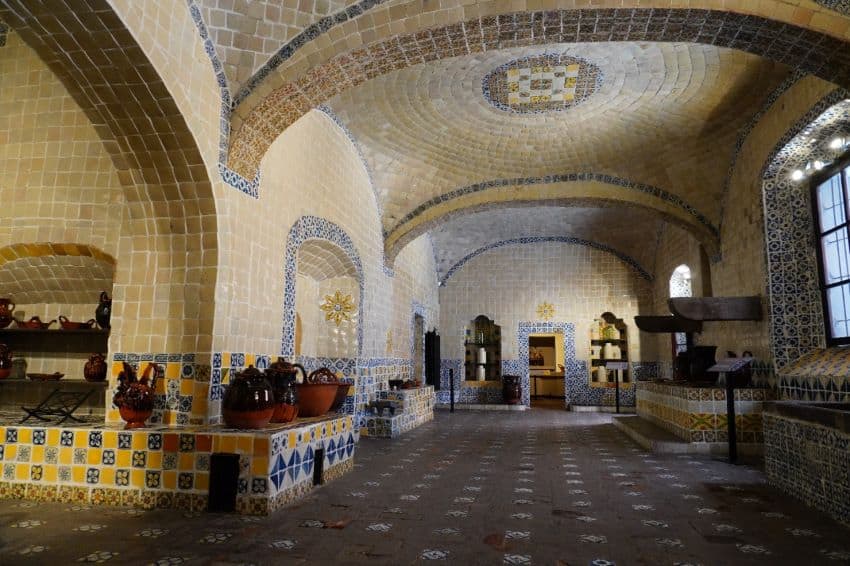
Housed in a Baroque building that dates back to 1698, what is now a museum originally served as a béguinage for Dominican nuns before becoming a convent. Over the centuries, the building’s purpose shifted from military barracks to a psychiatric hospital for men and even became an apartment complex before its restoration as a museum in 1973. The rooms inside showcase crafts and traditions hailing from Puebla’s seven indigenous regions, as well as exhibits on Talavera ceramics, traditional festivals and regional dances.
- Perfect for: Fans of folk art, crafts and Mexican traditions.
- Cost: General admission is 48 pesos per person
- Address: Calle 3 Norte 1210, Centro Histórico
Don’t miss: The legendary Talavera-tiled kitchen where, legend has it, Sister Andrea de la Asunción created the first mole poblano.
Museo de Arte San Pedro

A 16th-century hospital, San Pedro is a museum distinguished by an elegant double-arched quarry stone courtyard, said to be the second largest in Puebla. The museum’s five main exhibition halls span more than 1000 square meters and include a permanent gallery of sacred art. Novohispanic and 19th-century art lead the collection, with works by renowned artists such as Miguel Jerónimo Zendejas, Vicente Manuel Talavera, Luis Berrueco and Gaspar Conrado.
- Perfect for: Art enthusiasts, colonial history lovers, and cultural event seekers.
- Cost: General admission is 48 pesos per person
- Address: Calle 4 Norte 203, Centro Histórico
Don’t miss: The recreation of the hospital’s historic apothecary, which served the community for more than 350 years.
Museo de la Revolución (Casa de los Hermanos Serdán)
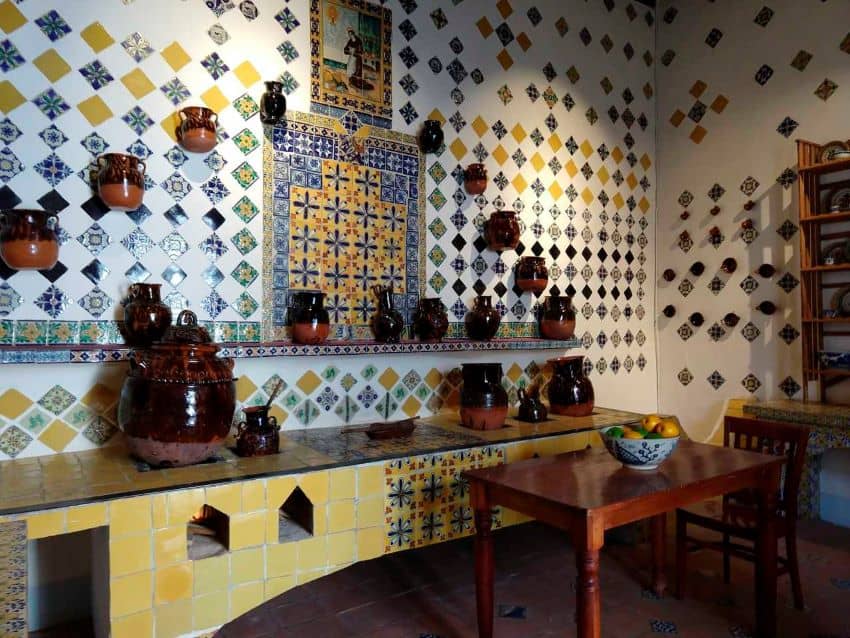
Walk through the very home where the first shots of the Mexican Revolution were fired. The Serdán family, accused of stockpiling weapons and planning an uprising against then-President Porfirio Díaz, attempted to resist a government raid on November 18, 1910, which ended in tragedy. Walk through the perfectly-preserved shoe workshop, bedrooms, kitchen and the very spot where Aquiles Serdán hid before he was discovered and killed.
- Perfect for: Families and those interested in the Mexican Revolution.
- Cost: General admission is 48 pesos per person
- Address: Av. 6 Oriente 206, Centro Histórico
Don’t miss: The unmistakable bullet holes throughout the house and on the facade, a symbol of the Revolution’s undeniable impact on Mexican history.
Casa de Alfeñique

Another Baroque-mansion-turned-museum, the Casa de Alfeñique was constructed in the late 18th century and named after the elaborate white stucco facade resembling the traditional Spanish sweet alfeñique, a concoction of sugar, egg whites and almonds. Admire over 1,500 pieces on display across 16 exhibition rooms which include period furniture, Talavera ceramics, religious oils and other pieces illustrating daily life in Puebla during the 18th and 19th centuries, scattered through a charming museum.
- Perfect for: Architecture aficionados and regional history enthusiasts
- Cost: General admission is 48 pesos per person
- Address: Calle 4 Oriente 416, Centro Histórico
Don’t miss: The exhibit of historic artifacts including carriages, local gastronomy and period clothing.
Capilla del Arte UDLAP

This architectural gem belonging to the Universidad de las Américas Puebla (UDLAP) features an eclectic French-inspired iron and glass structure imported directly from Paris. Once known as the Fábricas de Francia, the space now hosts a contemporary art gallery, artistic forum and mini reading area, regularly hosting national and international exhibitions, concerts, art cinema, lectures and family-friendly performances, all free to enter.
- Perfect for: Contemporary art lovers and students
- Cost: Free to enter
- Address: Calle 2 Norte 1204, Centro Histórico
Don’t miss: The regular cultural events calendar that includes musical Wednesdays, dance and film Fridays and creative Sundays.
Biblioteca Palafoxiana

This Unesco-recognized library was founded in 1646 and was the first public library in the Americas. Inside are more than 45,000 rare books and manuscripts, including nine books printed before the year 1500 and eight of Mexico’s earliest printed works. The library’s furnishings and organizational structure have remained virtually unchanged for over two centuries, offering a true feel of colonial Mexico’s scholarly world. While it’s hard to categorize, this is probably the most historically important museum in Puebla.
- Perfect for: Bibliophiles, researchers and history lovers
- Cost: General admission is 40 pesos per person.
- Address: Calle 5 Oriente 5, Centro Histórico
Don’t miss: The 1493 Nuremberg Chronicle, one of the earliest illustrated books in the world and an exceptionally rare incunabulum featuring over 2,000 engravings.
Casa del Deán

A mansion built in the late 16th century, the Casa del Deán is celebrated for housing murals considered among the finest examples of Renaissance art in the Americas. Much of the original structure was destroyed in the 1950s, though two rooms upstairs survived and are adorned with bright frescoes, earning it the nickname of “Sistine Chapel of the New World”. The blend of Renaissance and Indigenous motifs reflects the house’s Spanish owner and the local artists who decorated it.
- Perfect for: Art buffs and architecture lovers
- Cost: General admission is 75 pesos per person
- Address: Calle 16 de Septiembre 505, Centro Histórico
Don’t miss: The upstairs murals “The Procession of the Sibyls” and the “The Triumphs,” based on the poems of Petrarch.
Museo Fuerte de Guadalupe

Located on top of a hill in a historic fort, this museum showcases the fortress’s crucial role in the Battle of Puebla in 1862. Exhibits trace the site’s evolution from a colonial-era chapel to a defensive stronghold against French invasion. Walk through interactive exhibits, admire 19th- and 20th-century artifacts and immerse yourself in a large outdoor diorama that recreates scenes from the famous battle of Cinco de Mayo.
- Perfect for: Military history fans and families
- Cost: General admission is 75 pesos per person
- Address: Av. Ejércitos de Oriente S/N, Centro Cívico Cinco de Mayo
Don’t miss: Panoramic views of downtown Puebla from the top of Acueye Metepec hill.
Bethany Platanella is a Mexico City–based travel writer passionate about local markets, yoga, mangos, and the thrill of new adventures. Discover her latest guides and insider tips at aweekendawayin.com and
CDMX museum closures and cellphones in schools: Thursday’s mañanera recapped

The use of cell phones in schools, the arrest of 11 Colombians in Michoacán and the closure on Wednesday of six Mexico City museums were among the topics President Claudia Sheinbaum spoke about at her Thursday morning press conference.
Here is a recap of the president’s June 5 mañanera.
Should cell phones be allowed in schools?
A reporter asked the president about a proposal in Jalisco to ban cell phones in primary and middle schools.
Sheinbaum said it was up to individual states to decide whether to prohibit phones in schools or not, but asserted that it’s “important” that they not be used in classrooms or during students’ break time.
“In other words, children should have a space where they don’t have to be using their phone,” she said.
“… There are a lot of studies about the impact the intensive use of cell phones has on girls and boys,” Sheinbaum said, adding that phone usage can contribute to “learning problems and many other issues.”

“So it’s important that it not be used. A ban — that’s a decision for each [federal] entity,” she said.
Rather than banning the use of phones in schools, Sheinbaum said that her government favors educating children about why they shouldn’t use the devices in the classroom.
“The will of a person, of the child, is better; that he or she learn why not to use it,” she said.
Sheinbaum acknowledges arrest of Colombians in connection with National Guard deaths
A reporter highlighted that Colombian President Gustavo Petro “declared that there is involvement of Colombian mercenaries in Mexican drug cartels.”
Petro was referring to 11 former Colombian soldiers who were arrested last week in connection with the death of eight members of the National Guard, who were killed by the explosion of a land mine in the municipality of Los Reyes, Michoacán, on May 27.
Six Mexicans were also detained in connection with the crime.

Sheinbaum acknowledged that a number of Colombians were among the “members of a criminal group” who were arrested. She was referring to the Cártel de los Reyes, based in Los Reyes, Michoacán.
“It’s not the first time that people of this nationality have been arrested [in Mexico]. In Mexico City, when I was mayor, there were also arrests of [people] of other nationalities, but particularly Colombians,” Sheinbaum said.
She said she had spoken to Petro about creating a “high-level group” to examine “security issues between Colombia and Mexico.”
“… There is coordination and we’re strengthening information, the capacity for joint collaboration,” Sheinbaum said.
Asked whether she could confirm the presence of Colombian “mercenaries” in Mexican organized crime groups, she said:
“There have been arrests. … You can ask on Tuesday so that the security minister provides greater details, but there have been arrests in Mexico … [of] people of Colombian nationality.”
Mexico City museums reopen
A reporter asked the president about the closure on Wednesday of various museums in Mexico City due to problems related to the hiring of security personnel.
The National Anthropology Museum and the National History Museum in the Chapultepec Castle were among six museums affiliated with the National Institute of Anthropology and History (INAH) that shut their doors.

Sheinbaum assured reporters that the museums would reopen on Thursday, and that indeed was the case.
She said that “there was a problem” related to the awarding of contracts after INAH ran a bidding process to find new security personnel for their museums.
“That’s why they closed,” Sheinbaum said.
Asked whether private security personnel or police would be on duty at the museums on Thursday, the president said officers with the capital’s Policía Auxiliar, or Auxiliary Police, force would be present.
In 2024, the National Anthropology Museum and the National History Museum were the two most-visited museums in Mexico City, which has a total of 189 museums, according to the city government.
By Mexico News Daily chief staff writer Peter Davies ([email protected])
